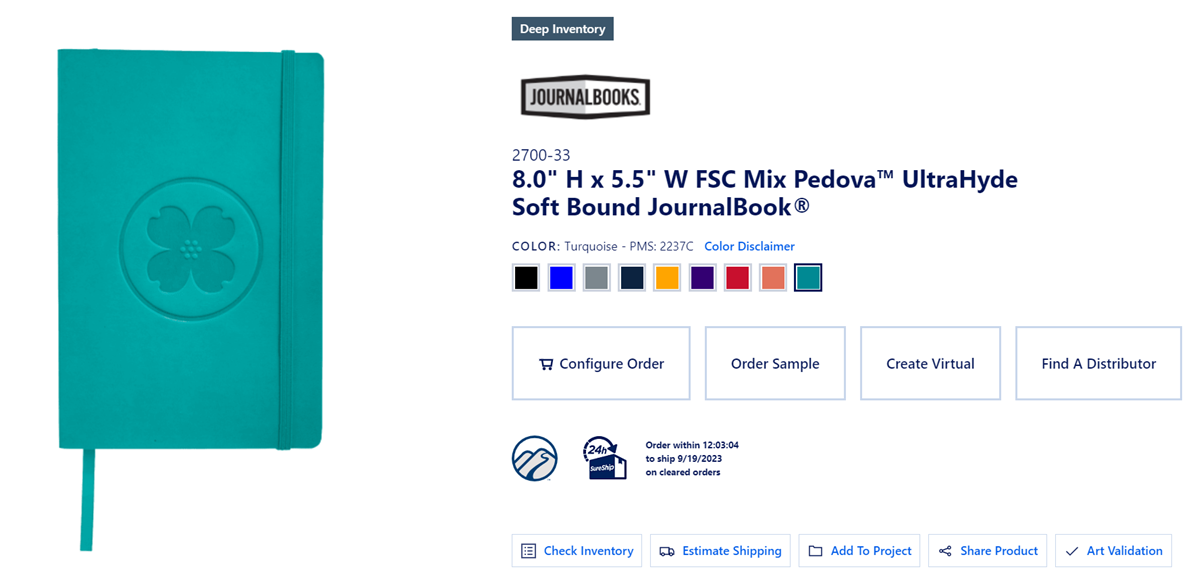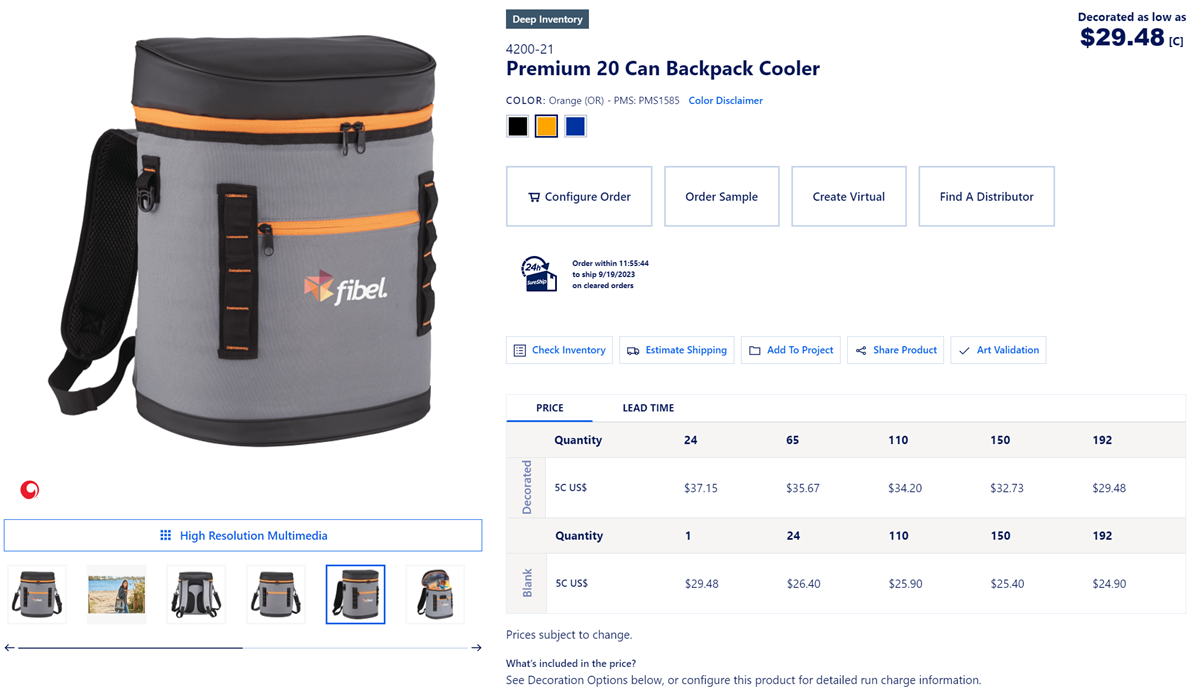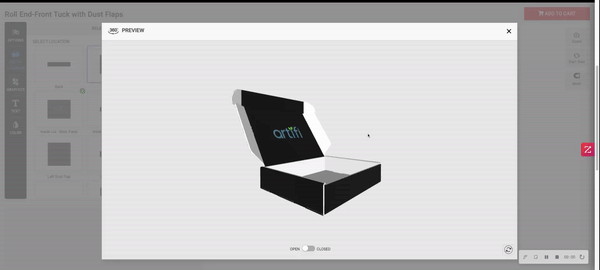Introducing Interactive 360-Degree Renderings
As the technology to deliver high-quality, real-time product renderings continues to evolve, so do customer expectations. There are three ways to showcase product customization renderings in Artifi to support a user-friendly shopping experience. Discover how each type of rendering impacts the user experience, drives conversions, and boosts revenue.
2D Product Rendering
Two-dimensional renderings showcase a design on a flat product surface without showing depth. This is a good option for products that are easy to visualize on a flat surface, like fabrics, embroidery, or flat promotional products with personalization on only one or two sides. This example from PCNA shows a 2D mockup of an embossed journal.

3D Product Rendering
Three-dimensional product renderings are the most common and showcase customization in the context of a photo that demonstrates the depth of the product in a 3D space. Often, a product will show multiple 3D angles to help customers visualize the customization, especially if printing or other customization is available on multiple sides. This example of a cooler from PCNA uses 3D renderings to help demonstrate the size and shape of the product.

360-Degree Rendering
Artifi’s 360-degree real-time rendering engine allows customers to see exactly what the customized product looks like from every angle. As elements like images, colors, and text are added or altered, customers can shift the perspective of the 3D object to see every surface in one continuous view. This provides a more holistic visualization versus a sequence of individual 3D renderings. The result is a user-friendly design interface that empowers customers to bring high-quality custom products to life without the need for professional designers.
The Central Group is leveraging interactive 360-degree models to show real-time virtual proofs of its custom packaging offering.

Learn more about asset specifications to support 2D, 3D, and 360-degree models in Artifi’s Knowledge Base.
Interested in seeing Artifi’s 360-degree renderings in action? Request a demo today.




